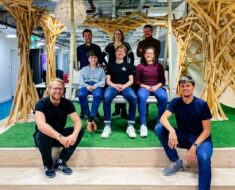
It is becoming more critical for teachers to foster creativity and critical thinking in their students. In addition, students need exposure to various projects that integrate science with the arts. This exposure can lead students to choose from a variety of career paths. The STEAM approach aims to improve the quality of education by integrating different academic disciplines to help students choose an academic field that best suits their interests.
What is STEAM?
STEAM stands for science, technology, engineering, art, and mathematics. STEAM is a highly collaborative method of educating students through collaborative projects and independent work that cultivate essential skills. STEAM projects foster student autonomy and cultural competence as the students solve real-world problems. In a STEAM-focused classroom, the teacher can provide the space, flexibility, and technology the students need to move around and perform different academic tasks.
Art in a STEAM Classroom
A STEAM classroom provides the framework that brings the four academic disciplines together in a cohesive way. For example, incorporating art into the existing science and technology-based curriculum may not seem like a fair idea. Yet, an art curriculum can help students develop their originality and creativity when solving science, technology, and math problems. The students will also be more likely to think critically, generate original ideas, and engage more in innovative projects.
Educators in a STEAM Classroom
Ideally, educators with different academic backgrounds will collaborate to form a STEAM program. In addition to the curriculum, educators should dedicate time for collaboration and team teaching. Each member should highlight their strengths and identify areas where they feel they can help their students who may be struggling. For example, educators can give students extra time to complete projects, offer them tutoring services, or use classroom technology to help enhance classroom learning. In this way, the school can create an environment that allows students to flourish.
In today’s global job market, students will need a mix of analytical and creative skills for success. In addition, a growing number of industries require employees to have more than one skill set, and the need for a more diverse workforce is increasing. The STEAM approach to education aims to improve the quality of education so that students can successfully enter today’s workforce.
Dil Bole Oberoi





